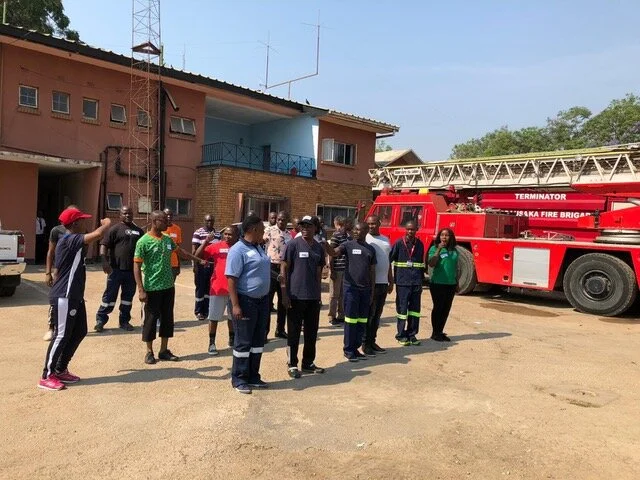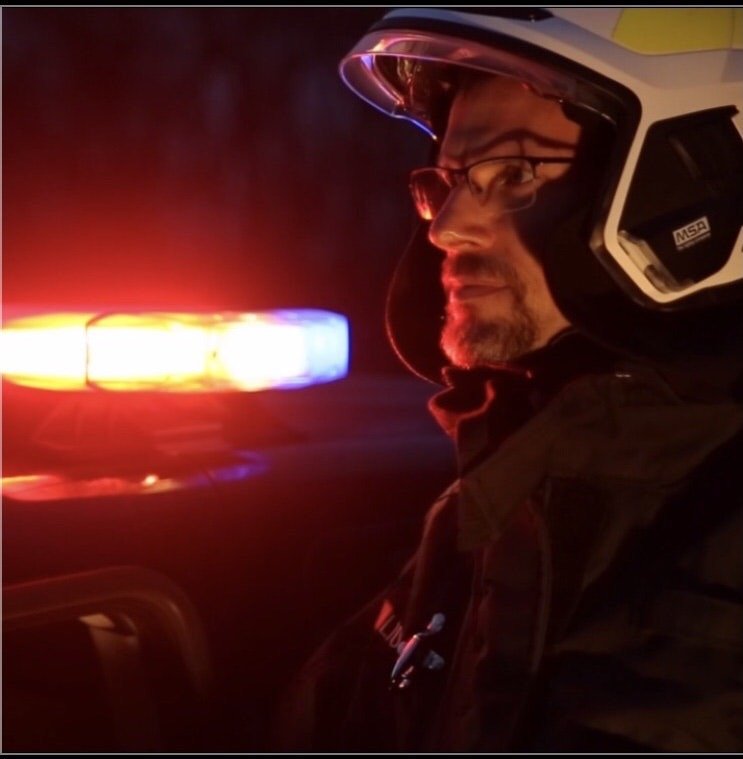by Brad Fiore
Just like any other fire, there are two main strategies in fighting bush fires: Direct and indirect. Topography, fuel types, and resources may vary between the US and Africa, but the basic tactics are the same. In a direct attack, we remove either the oxygen or the heat, and in an indirect attack, we remove the fuel.
The best tool we have for fire extinguishment is water. Unfortunately, a lot of times, the fire is in an area that makes it difficult to get water to. Hand tools play a significant role in fighting bush fires. The basic types are cutting, digging, scraping, and smothering tools.
In a direct attack removing the oxygen is accomplished by smothering the fire. We can throw dirt on the burning material or pat small flames out with our tool. I’ve seen fire flappers used to beat the flames of large bushes. I am not familiar with how well this works, but from another point of view, in North America, our flappers are smaller, and we use them on small creeping fires. The technique is to drag the flapper over the burning material, maybe using a slight patting motion. Beating a fire uses a lot of energy in one concentrated area. It also seems that embers are kicked up into the air, which could start a spot fire. Other tools, such as hoes and fire rakes, can all be used to pat out small flames.
Smoke coming from trees can be a sign of a potential bush fire.
When you use water to remove the heat, use it sparingly and wisely. Always walk in line with the fire, spraying water along the fire edge. This will make your water work smarter. Any water that bounces will bounce into the flames ahead. If you stand perpendicular to the fire, the overspray and bounce will fall into the already burned area, wasting that water. It doesn’t take a lot of water to douse the flames, so attaching a low-volume nozzle to your hose will extend your water.
The indirect attack is more labor intensive, but provides a safer environment for the firefighters. The indirect attack is the process of cutting a fire line around the fire. You and your team will be cutting and scraping away the fuel so that when the fire reaches the fire line, there is nothing there to burn.
Tools for this are anything you can use to cut through the ground material and dig down to the soil. Hoes and rakes made for this are great, but a garden hoe that is sharpened will do the trick. That shovel we used before to throw dirt on the fire, hold it parallel to the ground, and you now have a scraping tool. Chainsaws work wonders, but a hand saw, and a pair of loppers will handle small bushes and brush. A hatchet or fire axe can help clear small trees.
Your goal is to get down to mineral soil, and the width of the line needs to be one and one-half the height of the fuels. If you are cutting in grass that is a foot and a half tall, you need to make a line that is 3 feet wide. Always start and end at an anchor point. A road, trail, open dirt area, or body of water. The best practice for cutting the line is to space your crew a few feet apart so that swinging tools do not hit a team member. Each member will take a swipe and move forward along the line. As the team moves, each member is clearing more along the line.
Once the line is cut, and if you have time, you can backburn. This intentionally burns the material between your fire line and the main fire. The main fire will be intense and may make its own weather, causing high winds. Lighting a fire ahead of this will make the fire small and manageable. It will grow as it gets closer to the main fire, but at this point, it is within your control lines.
Anytime you are fighting bush fires, always have escape routes planned and made known by all members fighting the fire.
From my experience teaching a couple of the virtual classes for AFM, I have come to find out that you, like most firefighters, are extremely inventive. With the knowledge all the instructors provide, you find ways to make the resources you do have work. That’s what firefighting is.
Be safe!
Brad Fiore is a volunteer firefighter of Cottekill Volunteer Fire Company and former Fire Chief. He also has experience as a 911 dispatch supervisor. Brad has served as an instructor for AFM’s virtual firefighter trainings.



